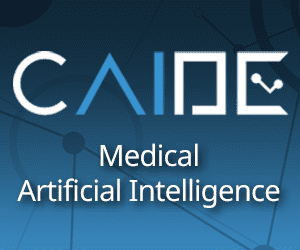AI-driven analytics have become a vital tool for semiconductor companies, allowing them to optimize manufacturing processes, improve design efficiency, and enhance decision-making through data-driven insights. However, CIOs in the semiconductor industry face significant challenges when it comes to extracting value from the vast amounts of data generated throughout the semiconductor lifecycle. These challenges span data integration, infrastructure, talent acquisition, and ensuring scalability, while also aligning with business goals and maintaining data security.
Challenges in Extracting Value from Semiconductor Data with AI-Driven Analytics
1. Data Integration Across Complex Supply Chains
- Diverse Data Sources: Semiconductor companies operate across a highly complex supply chain involving multiple stages such as design, fabrication, testing, packaging, and distribution. Each stage generates vast amounts of data from different sources, including sensors, IoT devices, and manufacturing systems. Integrating this data into a centralized platform for AI analysis is difficult due to the heterogeneity of data formats, systems, and protocols.
- Siloed Data: Many semiconductor companies still have siloed data environments where different teams or departments control their own data. CIOs face the challenge of breaking down these silos to create a unified data architecture that supports AI-driven analytics and enables cross-functional insights.
2. Ensuring Data Quality and Accuracy
- Data Cleansing: For AI-driven analytics to deliver meaningful results, the data used must be clean, accurate, and relevant. Semiconductor data often contains noise or incomplete information, particularly when gathered from sensors and IoT systems on the manufacturing floor. CIOs must implement data cleansing and preprocessing protocols to ensure that AI models receive high-quality input.
- Data Consistency: Ensuring consistency in data formats, timeframes, and naming conventions is another challenge, particularly when data is collected from disparate sources. CIOs must establish standards and governance processes to harmonize data across the organization for effective AI analysis.
3. Infrastructure and Scalability Challenges
- High Data Volume and Velocity: Semiconductor manufacturing generates massive amounts of data at high velocity, especially with the rise of IoT and edge computing. AI models require significant computational power to process and analyze this data in real-time. CIOs need to ensure that their infrastructure—whether on-premises, cloud-based, or hybrid—can scale to handle this data load.
- Edge vs. Cloud Processing: While cloud-based AI platforms offer flexibility and scalability, they may introduce latency when processing time-sensitive data from semiconductor manufacturing operations. CIOs must weigh the benefits of edge computing, which processes data closer to the source, against the scalability and cost-efficiency of cloud-based analytics.
4. Talent Acquisition and Skill Gaps
- Shortage of AI Expertise: The semiconductor industry requires specialized knowledge in both semiconductor technology and AI-driven analytics. However, there is a shortage of talent with deep expertise in applying AI to semiconductor data. CIOs must invest in hiring or upskilling their workforce to ensure they have the right mix of skills, including data scientists, AI engineers, and domain experts who understand semiconductor manufacturing.
- Cross-Disciplinary Collaboration: AI projects in the semiconductor industry often require collaboration between data scientists, engineers, and IT professionals. CIOs need to foster a culture of cross-disciplinary collaboration to ensure that AI-driven insights are both technically sound and aligned with business objectives.
5. Security and Compliance Risks
- Data Privacy and Intellectual Property (IP) Protection: AI-driven analytics often require access to sensitive data, including proprietary design information and IP. CIOs must ensure that AI systems are secure and comply with data privacy regulations while protecting intellectual property from unauthorized access or theft.
- Regulatory Compliance: Semiconductor companies are subject to various regulatory frameworks that govern data handling, export controls, and cybersecurity. CIOs must ensure that their AI systems are compliant with these regulations, particularly when dealing with sensitive or restricted data.
6. Aligning AI with Business Objectives
- Identifying Use Cases with ROI Potential: One of the key challenges CIOs face is identifying AI use cases that deliver tangible business value. While AI can potentially improve efficiency and reduce costs across semiconductor operations, CIOs must prioritize use cases that align with strategic business goals and demonstrate clear ROI.
- Measuring Success: Measuring the success of AI-driven analytics can be complex, particularly in the semiconductor industry where improvements in yield, process optimization, or time-to-market may not immediately translate into quantifiable financial outcomes. CIOs need to define appropriate success metrics and KPIs that reflect the impact of AI on business performance.
Strategies for Extracting Value from Semiconductor Data with AI-Driven Analytics
1. Data Governance and Standardization
- Implementing Strong Data Governance: CIOs must establish robust data governance frameworks to ensure the quality, security, and consistency of data across the organization. This involves defining data ownership, implementing data standards, and ensuring compliance with regulatory requirements. Strong data governance enables more effective AI analysis and drives better decision-making.
- Data Standardization: Standardizing data formats, labels, and reporting processes across the organization is crucial for enabling seamless data integration and reducing the complexity of AI analysis. CIOs should work toward developing a unified data platform that consolidates data from multiple sources and makes it accessible to AI-driven analytics.
2. Adopting Scalable Infrastructure
- Cloud and Hybrid Solutions: To address the challenges of high data volumes and scalability, CIOs should consider leveraging cloud-based AI platforms that offer flexible, scalable infrastructure. Hybrid solutions that combine on-premises and cloud resources may be optimal for semiconductor companies that need to process data at the edge while taking advantage of cloud-based AI tools.
- Edge Computing for Real-Time Analytics: For time-sensitive semiconductor applications, CIOs should explore edge computing solutions that allow data to be processed closer to the source, reducing latency and enabling real-time AI-driven decision-making on the manufacturing floor.
3. Leveraging AI Tools for Data Cleansing and Preprocessing
- Automating Data Preparation: CIOs can deploy AI-powered data preparation tools that automate the cleansing, transformation, and normalization of raw data. These tools help streamline data preprocessing, ensuring that AI models receive high-quality input without the need for manual intervention.
- AI-Assisted Data Labeling: Labeling data for training AI models can be a labor-intensive process. CIOs should consider using AI-assisted labeling techniques that automatically tag and classify data based on patterns, reducing the time and effort required for manual data labeling.
4. Fostering Collaboration Between IT and Business Units
- Cross-Functional Teams: To maximize the value of AI-driven analytics, CIOs should create cross-functional teams that include data scientists, engineers, IT professionals, and business stakeholders. These teams can collaborate on identifying high-impact AI use cases, ensuring that AI projects are aligned with business goals and have the necessary technical support.
- Workforce Upskilling: CIOs should invest in training programs to upskill their existing workforce in AI and data analytics. By equipping employees with the skills needed to work with AI tools and interpret data-driven insights, semiconductor companies can better leverage AI to drive business outcomes.
5. Ensuring Security and Compliance
- Implementing Strong Security Protocols: CIOs must ensure that their AI systems are equipped with strong security protocols, including encryption, access controls, and monitoring for potential security threats. This is particularly important when dealing with sensitive semiconductor data and intellectual property.
- Compliance Audits: Regular compliance audits of AI systems should be conducted to ensure that they meet the necessary legal and regulatory requirements, particularly in regions with strict data protection or export control laws.
Conclusion
AI-driven analytics offer semiconductor CIOs powerful opportunities to unlock valuable insights from their data, enabling process optimization, enhanced decision-making, and innovation. However, CIOs must overcome challenges related to data integration, infrastructure scalability, security, and skill shortages to extract full value from AI initiatives. By adopting a strategic approach, investing in data governance and infrastructure, and fostering collaboration between IT and business units, CIOs can effectively harness the power of AI-driven analytics to drive innovation and maintain a competitive edge in the semiconductor industry.





